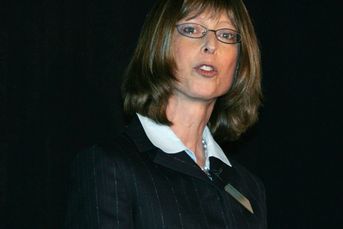Whither interest rates?
The jump in yield on the benchmark 10-year Treasury note to 3.5% during the last quarter of 2010 has rekindled fears that interest rates are on the rise for good.
The jump in yield on the benchmark 10-year Treasury note to 3.5% during the last quarter of 2010 has rekindled fears that interest rates are on the rise for good.
Even the Federal Reserve’s early-November announcement of QE2 — a $600 billion bond purchase program designed to keep rates low — couldn’t stop the bond market slump.
Improving economic data, along with concerns about inflation, contributed to the sell-off, observers said.
Despite the boom in the bond market, advisers have been cautious for some time about letting clients jump in, and they remain so.
“I don’t think there’s ever been a time where it’s been more obvious what to do with fixed income,” said Ed Butowsky, managing partner of Chapwood Capital Investment Management LLC, which manages about $1 billion for clients.
“Rates will go higher — they can’t go lower,” he said.
Anyone who owns government paper of more than four years’ maturity “should be put under some sort of protective service — they’re crazy,” Mr. Butowsky said.
Over the next two to three years, fixed-coupon bonds “will be swimming against the tide,” said Chris Lamb, a principal with Old Mission Investment Co. LLC, which manages about $320 million.
But fixed-income strategists are not quite as pessimistic.
They don’t expect a significant rise in rates, given the weak economy, and think that some sectors of the fixed-income market still look attractive.
Households and the corporate sector are still deleveraging, said Jeffrey Cleveland, a senior economist at money manager Payden & Rygel. That means a reduced supply of bonds — and lower rates.
The Fed is “buying up $600 billion more [of bonds] over the next five months and removing them from circulation,” Mr. Cleveland said.
The reduced supply should keep the benchmark Treasury rate in the 3% to 4% range, he said.
Only a clear uptick in inflation, along with economic growth and a “sharp pickup” in the supply of bonds would be enough to raise rates, Mr. Cleveland added.
Robert Tipp, chief investment strategist at Prudential Fixed Income, agrees. He expects 2% to 4% yields on the 10-year Treasury for the next year or two.
“Keep in mind that there are massive head winds this economy is facing,” Mr. Tipp said. “The likelihood of rates’ going higher is extremely slim.”
The Fed will have to stick with its zero-rate policy to bring unemployment down, as well as to let the banks “unwind their delinquent real estate portfolios,” Mr. Tipp said. “Fears of inflation are very misguided,” he added.
Even with the economy improving, employment will be “very slow” to recover, said Krishna Memani, director of fixed income at OppenheimerFunds Inc.
“Rates could go up,” he said, “but not substantially from here.”
A rise in the 10-year bond to 4% would imply mortgage rates of from 5.5% to 6%, which would hurt the fragile housing market, said Tim Anderson, chief fixed-income officer at RiverFront Investment Group LLC, which manages about $2.2 billion.
He thinks the Fed is likely to defend that 4% rate level through more quantitative easing if needed.
“A backup toward 5% is unlikely until [economic] growth accelerates and unemployment falls significantly,” Mr. Anderson said.
CORPORATES LOOK GOOD
Analysts said the perceived quality of corporate credits in general — and hence their prices — should improve along with the economy, providing a buffer in case rates go higher.
“The underlying growth in the economy is significantly better and more multifaceted than people are looking for,” Mr. Memani said.
Oppenheimer’s flagship Global Strategic Income Fund (OPISX) is overweight in floating-rate bank loans, high-yield bonds and emerging-markets paper “because of one simple thing — global growth is improving,” he said.
Emerging-markets bonds “are only now being recognized by larger pension funds and endowments,” Mr. Cleveland said. That’s why he thinks such bonds have “more room to run,” although investors have to be careful as to their timing.
Mr. Anderson suggests a credit “barbell” strategy, using shorter-term investment-grade corporates of around three years’ duration and high-yield bonds of about 4.5 years. The blend yields 5% and produces a steady flow of available cash to reinvest if rates rise.
“We plan to transition to floating-rate bonds,” Mr. Lamb said. “Floating-rate bonds tend to maintain their values” as rates rise, “and they still trade at about 90 cents on the dollar, so there’s some appreciation potential.”
Analysts don’t discount the risk of higher rates.
But running for the hills now in expectation that a bubble in bonds is collapsing is “misguided,” Mr. Tipp said.
“People aren’t aware that the bear market in bonds in the “60s and “70s was something the developed world had not seen before,” he said. “A lot has been accomplished [since then with better] monetary policies” that target short-term rates.
After a 30-year bull market, “what happens next is not a big bear market,” Mr. Tipp added.
“Bonds are supposed to act as ballast” for a portfolio of riskier assets, Mr. Memani said. “That role hasn’t diminished, even with low yields.”
E-mail Dan Jamieson at [email protected].
Learn more about reprints and licensing for this article.





